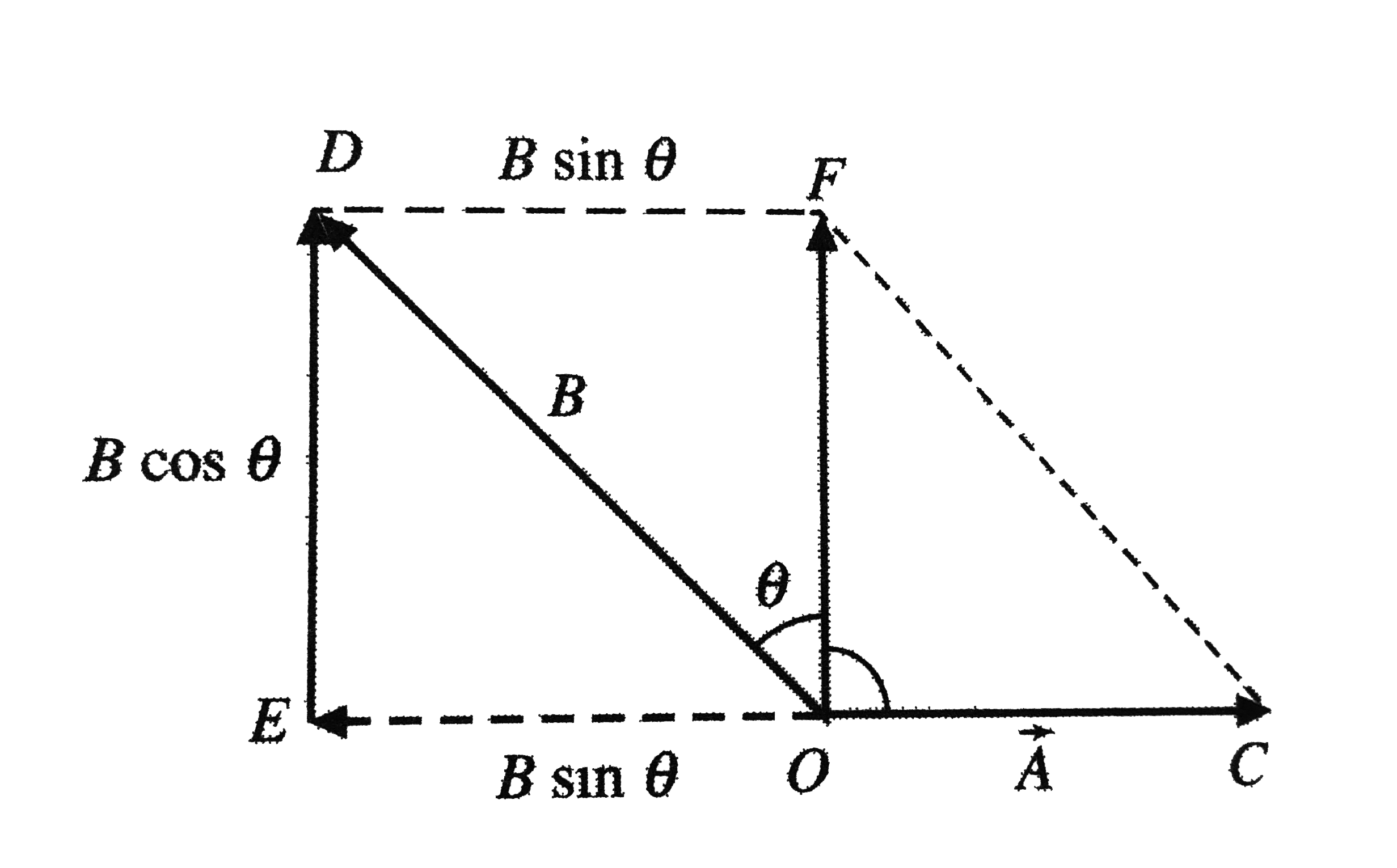If for two vector →A and →B, sum (→A+→B) is perpendicular to the difference (→A−→B). The ratio of their magnitude is
1
2
3
none of these
The correct Answer is:A
To solve the problem, we need to determine the ratio of the magnitudes of two vectors →A and →B given that their sum is perpendicular to their difference.
1. Understanding the Condition of Perpendicularity:
We know that two vectors →A+→B and →A−→B are perpendicular. This means that their dot product is zero:
(→A+→B)⋅(→A−→B)=0
2. Expanding the Dot Product:
We can expand the left-hand side using the distributive property of the dot product:
→A⋅→A−→A⋅→B+→B⋅→A−→B⋅→B=0
3. Using the Commutative Property:
Since the dot product is commutative (→A⋅→B=→B⋅→A), we can simplify the equation:
→A⋅→A−→B⋅→B=0
This simplifies to:
|→A|2−|→B|2=0
4. Rearranging the Equation:
Rearranging the equation gives us:
|→A|2=|→B|2
5. Taking the Square Root:
Taking the square root of both sides, we find:
|→A|=|→B|
6. Finding the Ratio:
The ratio of the magnitudes of →A and →B is:
|→A||→B|=1
Conclusion:
Thus, the ratio of the magnitudes of the vectors →A and →B is 1.
We know that two vectors →A+→B and →A−→B are perpendicular. This means that their dot product is zero:
(→A+→B)⋅(→A−→B)=0
We can expand the left-hand side using the distributive property of the dot product:
→A⋅→A−→A⋅→B+→B⋅→A−→B⋅→B=0
Since the dot product is commutative (→A⋅→B=→B⋅→A), we can simplify the equation:
→A⋅→A−→B⋅→B=0
This simplifies to:
|→A|2−|→B|2=0
Rearranging the equation gives us:
|→A|2=|→B|2
Taking the square root of both sides, we find:
|→A|=|→B|
The ratio of the magnitudes of →A and →B is:
|→A||→B|=1
Thus, the ratio of the magnitudes of the vectors →A and →B is 1.
Similar Questions
If →A+→B=→R and 2→A+→B s perpendicular to →B then
View SolutionThe vector (→a.→b)→c−(→a.→c)→b is perpendicular to
View SolutionThe resultant of two vectors →A and →B is perpendicular to the vector →A and its magnitude is equal to half of the magnitude of the vector →B. Find out the angles between →A and →B.
 .View Solution
.View SolutionTwo vectors →A and →B are such that →A+→B=→A−→B. Then
View SolutionThe resultant of →A and →B is perpendicular to →A. What is the angle between →A and →B ?
View SolutionThe resultant of →A and →B is perpendicular to →A. What is the angle between →A and →B ?
View SolutionIf vectors →Aand→B are such that ∣∣→A+→B∣∣=∣∣→A∣∣=∣∣→B∣∣ then ∣∣→A−→B∣∣ may be equated to
View SolutionTwo vectors →Aand→B have equal magnitudes.If magnitude of (→A+→B) is equal to n times of the magnitude of (→A−→B) then the angle between →Aand→B is :-
View SolutionIf →a,→band→c are vectors such that |→a|=3,∣∣→b∣∣=4and|→c|=5and(→a+→b) is perpendicular to →c,(→b+→c) is perpendicular to →a and (→c+→a) is perpendicular to →b then ∣∣→a+→b+→c∣∣= (A) 4√3 (B) 5√2 (C) 2 (D) 12
View SolutionIf →a,→b,→c are unit vectors such that →a is perpendicular to the plane of →b,→c and the angle between →b,→c is π3, then ∣∣→a+→b+→c∣∣=
View Solution

